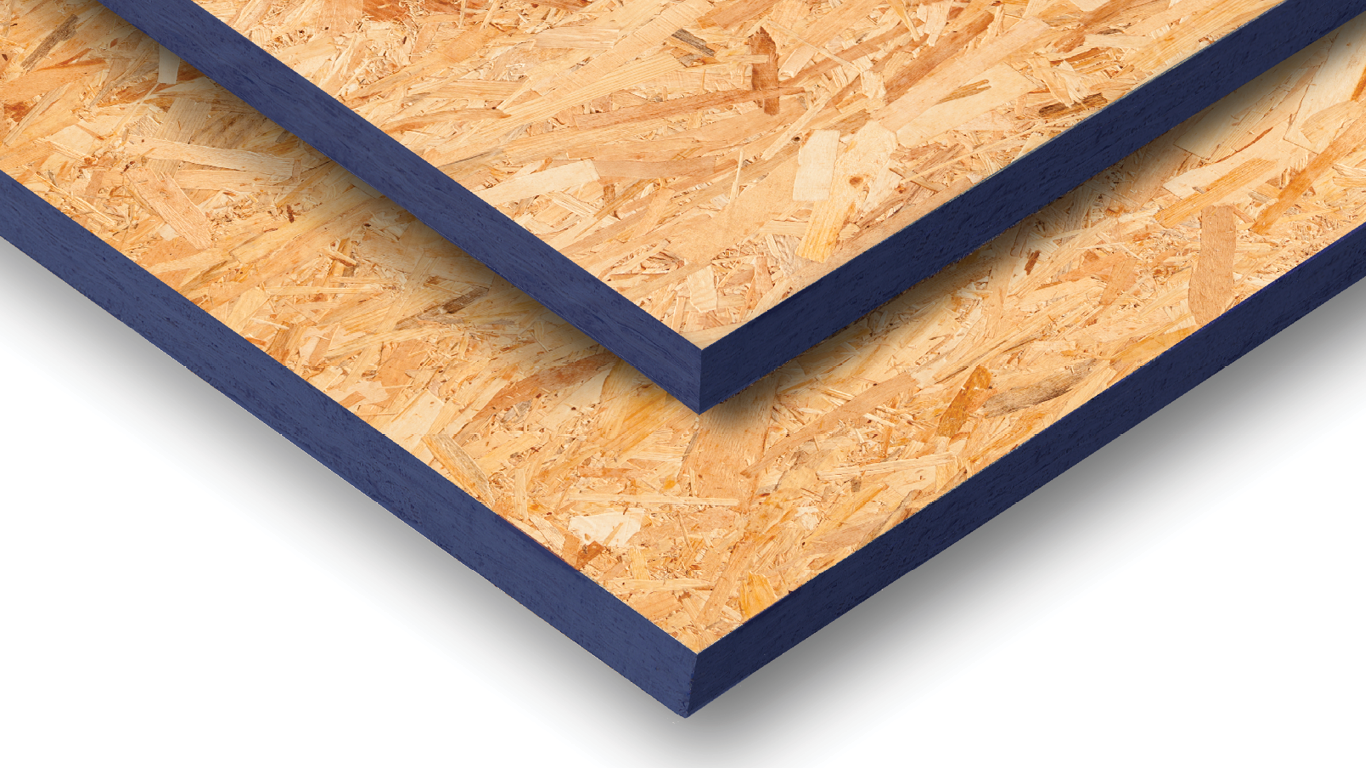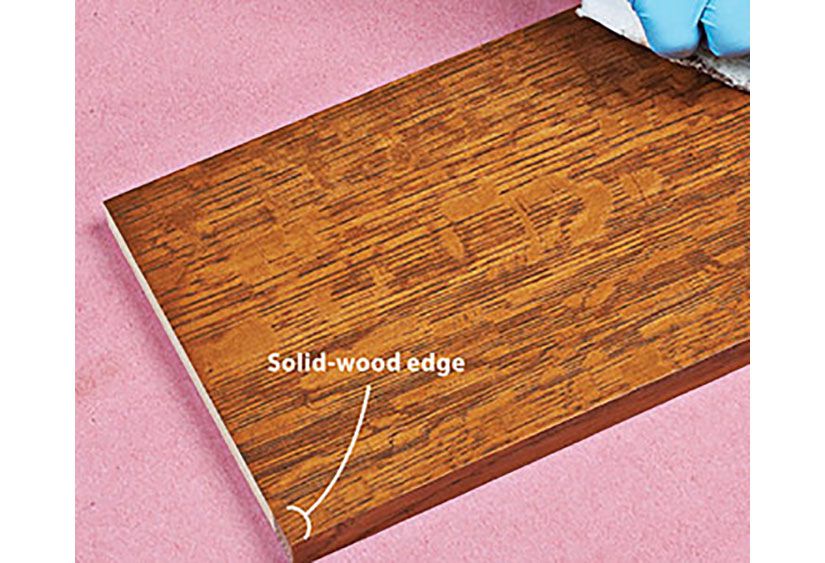Have you ever wondered what the color on the edge of plywood means? Well, you’re in luck because in this article, we’re going to dive into this fascinating topic. Whether you’re a woodworking enthusiast or just curious about the intricacies of plywood, we’ve got you covered. So, let’s explore the world of plywood and decipher the meaning behind its colorful edges.
Plywood is a versatile building material used in various construction projects and furniture making. But have you noticed that plywood often has different colored edges? These colors aren’t just for aesthetics; they actually serve a practical purpose. Each color on the edge of plywood represents a different grade or type, indicating its quality and intended use. Understanding these colors can help you choose the right plywood for your specific needs.
So, if you’ve ever wondered why plywood edges come in different colors and what they signify, keep reading. We’ll take a closer look at each color and its meaning, ensuring you have all the knowledge you need to make informed decisions when working with plywood. Let’s unravel the mystery together and discover the secrets behind the color on the edge of plywood!

What Does the Color on the Edge of Plywood Mean?
Plywood is a versatile material used in a variety of construction and woodworking projects. When examining a sheet of plywood, you may have noticed that the edges are often colored differently than the surface. However, have you ever wondered why the color on the edge of plywood varies?
Understanding the Color Differences
The color variations on the edge of plywood are not random. They actually serve a purpose and provide valuable information about the type and quality of the plywood. The color is a result of the finishing process during manufacturing, where a different material or treatment is applied to the edges compared to the surface.
Typically, you will find that the edges of plywood are either a reddish-brown color or a more pale yellowish color. Let’s explore what each color signifies:
- The reddish-brown color: This color indicates that the plywood has been treated with a sealant or preservative to protect it from moisture, rot, and insects. This treatment enhances the durability and longevity of the plywood, making it suitable for outdoor use or applications in high-moisture environments.
- The pale yellowish color: This color indicates that the plywood has not been treated with any special coatings or preservatives. It is often referred to as “unfinished” or “raw” plywood. While this type of plywood may be more budget-friendly, it is important to note that it is not as resistant to moisture and may require additional treatment if used in damp or wet conditions.
Different Types of Plywood
Plywood comes in various grades and types, each with its own specific characteristics and intended use. The color on the edge of plywood can provide additional information about its type. Here are some common types of plywood and their corresponding edge colors:
| Type of Plywood | Edge Color |
|---|---|
| Exterior-grade Plywood | Reddish-brown |
| Marine-grade Plywood | Reddish-brown |
| Interior-grade Plywood | Pale yellowish |
It is important to select the right type of plywood for your project based on its intended use, as using the wrong type can lead to structural issues or decreased performance.
Benefits of Treated Plywood
Opting for plywood with treated edges brings several benefits:
- Improved durability: The sealant or preservative applied to the edges helps protect the plywood from moisture, preventing warping, rot, and decay.
- Extended lifespan: Treated plywood can withstand harsh weather conditions and is less likely to deteriorate over time, ensuring a longer lifespan for your projects.
- Resistance to insects: The treatment also acts as a deterrent to wood-boring insects, reducing the risk of infestation and damage.
Tips for Using Plywood with Different Edge Colors
When working with plywood, consider the following tips based on the edge color:
Reddish-brown Edges:
- Verify the type of treatment: Check the specific treatment used on the plywood to ensure it is suitable for your intended application.
- Use in outdoor projects: Plywood with reddish-brown edges is ideal for outdoor projects, such as decking, fences, and sheds.
- Apply additional protection: Even though the edges are treated, it is still recommended to apply a sealant or paint to provide an extra layer of protection.
Pale Yellowish Edges:
- Avoid exposure to moisture: Unfinished plywood with pale yellowish edges should be used with caution in areas where it may come into contact with moisture, as it is not as resistant to water damage.
- Consider additional treatment: If using this type of plywood in humid or damp conditions, consider applying a sealant or paint to protect it from moisture.
- Interior applications: Plywood with pale yellowish edges is suitable for indoor projects like furniture, cabinets, and decorative accents.
Conclusion
The color on the edge of plywood serves as a visual indicator of the treatment or lack thereof. The reddish-brown color signifies treated plywood, which offers enhanced durability and protection against moisture and insects. On the other hand, the pale yellowish color indicates unfinished plywood that requires additional care and protection, especially in damp or wet environments. Understanding the significance of these edge colors allows you to choose the right plywood for your project, ensuring its long-term performance and structural integrity.
Key Takeaways: What Does the Color on the Edge of Plywood Mean?
- The color on the edge of plywood is called the veneer.
- The color can vary depending on the type of wood used for the veneer.
- Light-colored edges usually indicate plywood made from birch or maple.
- Dark-colored edges typically indicate plywood made from oak or walnut.
- The color on the edge of plywood is often used as a design element in furniture and cabinetry.
Frequently Asked Questions
Curious about the meaning of the color on the edge of plywood? Look no further! Here are some common questions and answers to satisfy your curiosity.
1. Why does plywood have a different color on the edge?
The color on the edge of plywood serves as an indicator of the type and quality of the wood used in its construction. Plywood is made by gluing together layers of thin wood, called veneers, with the grains of adjacent layers placed at right angles to each other. The visible edges of plywood typically reveal these layers.
The different colors you see on the edges of plywood result from the combination of the wood species used in the veneers. Each layer can have a different color and grain pattern, so when they are stacked together, you’ll see a mix of colors along the edges.
2. Does the color on the edge affect the quality of the plywood?
No, the color on the edge of plywood doesn’t directly impact its quality or structural integrity. It’s merely a visual characteristic that varies based on the type of wood used. However, the quality can vary depending on factors like the number of veneer layers, the type of adhesive used, and the craftsmanship in manufacturing the plywood.
If you’re concerned about the quality of plywood, it’s best to consider other factors such as the intended use, the thickness, and any specific requirements for strength, durability, or water resistance.
3. Can I change the color on the edge of plywood?
The color on the edge of plywood is primarily determined by the natural color and grain of the wood used in its construction. While you can’t change the inherent color of the wood, you can alter the appearance of the plywood edges through various finishing techniques.
One option is to apply a wood stain or a dye that can enhance or darken the color of the plywood edges. Another option is to use edge banding, which is a thin strip of wood, PVC, or other materials that can be glued over the edges to give them a different color or finish.
4. Does the color on the edge of plywood affect its stability?
No, the color on the edge of plywood doesn’t have any direct impact on its stability. The stability of plywood is determined by the layers of veneer glued together at right angles, which helps to counteract the natural tendency of wood to expand and contract with changes in moisture content.
However, it is important to note that plywood should be stored and used in appropriate conditions to maintain its stability. Excessive exposure to moisture or extreme temperature variations can cause warping or delamination, regardless of the color on the edges.
5. Can I paint over the color on the edge of plywood?
Absolutely! If you aren’t a fan of the natural colors on the edges of plywood, you can easily paint over them. Before painting, make sure to clean the edges and lightly sand them to create a smooth surface. Applying a coat of primer will help the paint adhere better to the plywood.
Once the primer is dry, you can use any type of paint suitable for wood to give the edges a color that matches your preference or the overall design scheme. Just remember to allow the paint to dry completely before using or handling the plywood to avoid any smudging or damage to the finish.

Summary
So, in summary, the color on the edge of plywood actually represents its grade. The darker the color, the higher the grade.
This grading system helps buyers and builders choose the right plywood for their projects. It’s important to understand the color codes to ensure you’re getting the quality you need.
